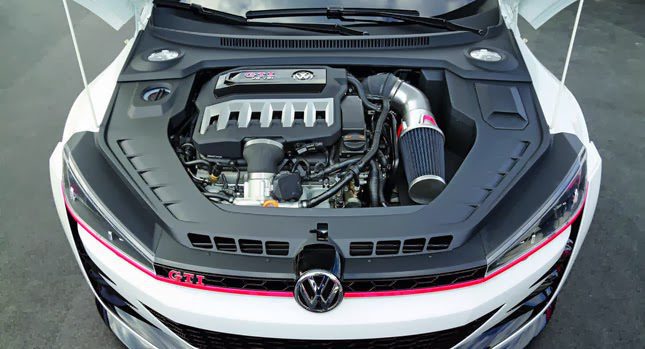Powerful and reliable Little Automobile Electric Motor Efficiency Evaluation
Evaluating the efficiency of tiny automobile electric motors is a nuanced task that requires an eager eye for information and a deep understanding of automobile engineering concepts. By taking a look at crucial metrics such as horse power and torque, as well as evaluating gas efficiency, we can reveal insights right into just how little cars and truck engines can be optimized for peak efficiency.

Tiny Car Motor Performance Metrics
In examining the efficiency of little auto electric motors, crucial metrics such as velocity, gas performance, and power outcome play a crucial role in determining their overall effectiveness and suitability for different driving conditions. Acceleration, measured in seconds from 0 to 60 miles per hour, indicates how rapidly a small vehicle can reach higher rates, which is essential for combining onto freeways or overtaking other vehicles. Fuel performance, typically gauged in miles per gallon (MPG), mirrors just how far a small auto can travel on a gallon of fuel, influencing running prices and ecological sustainability. Power outcome, revealed in horsepower (HP) or kilowatts (kW), signifies the engine's capacity to produce the required force to propel the vehicle, influencing its efficiency in different road problems. By examining these performance metrics adequately, suppliers, drivers, and vehicle enthusiasts can make educated decisions relating to the selection and optimization of tiny car electric motors to fulfill their particular needs and preferences.

Horse Power and Torque Analysis
With a fundamental role in understanding small car electric motor horsepower, torque and efficiency evaluation offers insight right into the engine's power distribution characteristics. In the context of small auto electric motors, horsepower is essential for determining velocity, leading speed, and total efficiency. By understanding the relationship between horse power and torque, vehicle engineers can maximize engine efficiency to meet the details demands of small auto applications.
Gas Efficiency Analysis
The examination of gas performance in small cars and truck electric motors plays a crucial function in establishing their economic and ecological impact. In little vehicle motors, where small dimension usually correlates with better fuel economic climate, numerous elements influence effectiveness.
To review gas efficiency, metrics such as miles per gallon (MPG) are commonly used. This measurement suggests the distance an automobile can take a trip per device of fuel. Little automobile electric motors that accomplish greater MPG scores are taken into consideration extra fuel-efficient, causing price financial savings for vehicle drivers and lowered discharges that benefit the atmosphere. Producers continuously aim to enhance fuel efficiency through advancements in engine technology, light-weight products, and wind resistant layouts.

Enhancing Tiny Auto Engine Efficiency
Enhancing the efficiency of little car engines is extremely important in making best use of performance and minimizing functional expenses. Optimizing little auto engine performance includes an all natural approach that thinks about numerous factors such as engine layout, fuel administration systems, and total vehicle dynamics.
An additional critical consider optimizing tiny cars and truck engine performance is the application of sophisticated technologies such as turbocharging or crossbreed systems. These innovations can boost power outcome without compromising gas effectiveness, supplying an equilibrium between efficiency and economy. Maximizing engine performance also entails boosting combustion performance, minimizing frictional losses, and improving thermal administration systems.
Future Trends in Small Auto Motors
Due to advancing auto technologies and the constant search of optimal small car engine efficiency, an exploration of future patterns in small cars and truck electric motors becomes essential - opel corsa engine. One noticeable pattern on the horizon is the boosting assimilation of electrical powertrains in small automobiles. As the auto sector shifts towards sustainability and lowered emissions, more little cars and truck suppliers are buying electric motor technology to enhance effectiveness and environmental friendliness
One more considerable pattern is the advancement of smaller sized yet more powerful turbocharged engines for small vehicles. By downsizing engine capabilities and integrating turbocharging innovation, automakers can accomplish higher power outputs while maintaining fuel efficiency. This trend straightens with the expanding customer demand for tiny automobiles that provide a dynamic driving experience without jeopardizing on fuel economy.
Moreover, the emergence of site link hybrid powertrains in tiny autos is anticipated to get traction in the future. Crossbreed systems use the benefits of both internal combustion engines and electrical motors, supplying enhanced performance and gas effectiveness. As developments in battery technology proceed, little automobile motors are most likely to become also extra effective and effective, satisfying the advancing requirements of consumers and governing demands for cleaner transportation remedies.
Final Thought
In conclusion, the evaluation of little vehicle motor efficiency metrics such as fuel, torque, and horsepower effectiveness is crucial in optimizing engine efficiency. By reviewing these aspects, manufacturers can enhance the overall effectiveness and power output of little car electric motors (opel corsa dig this engine). Future fads in small auto motors are most likely to focus on improving efficiency while maintaining gas performance, making sure that tiny vehicles proceed to be a economical and reliable choice for customers
By examining crucial metrics such as horse power and torque, as well as evaluating fuel performance, we can reveal insights into exactly how tiny vehicle engines can be enhanced for peak efficiency. Optimizing small automobile engine efficiency entails an all natural approach that thinks about different variables such as engine layout, fuel management systems, and overall car dynamics.In light of progressing vehicle modern technologies and the constant search of optimum tiny car engine performance, an exploration of future trends in small vehicle motors becomes crucial.In verdict, the evaluation of little cars and truck electric motor efficiency metrics such as torque, horse power, and fuel effectiveness is necessary in enhancing engine performance. Future fads in small car motors are likely to focus on enhancing efficiency while keeping gas performance, making sure that little automobiles continue to be a cost-effective and reliable link option for consumers.